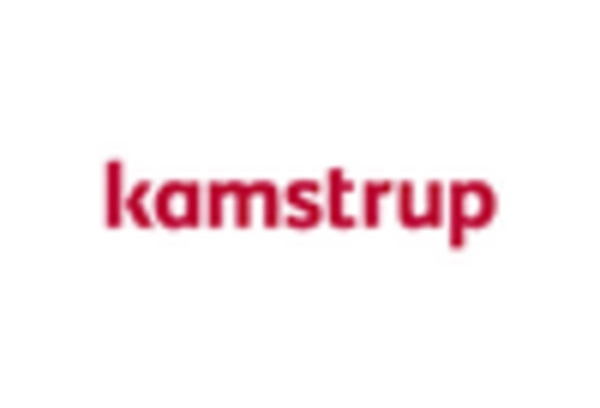The Distribution Meter Market is currently characterized by a dynamic competitive landscape, driven by technological advancements and increasing demand for energy efficiency. Key players such as Schneider Electric (FR), Siemens (DE), and Itron (US) are at the forefront, each adopting distinct strategies to enhance their market positioning. Schneider Electric (FR) emphasizes innovation through its EcoStruxure platform, which integrates IoT technology to optimize energy management. Siemens (DE) focuses on digital transformation, leveraging its expertise in automation and data analytics to improve operational efficiency. Meanwhile, Itron (US) is enhancing its offerings through strategic partnerships aimed at expanding its smart metering solutions, thereby shaping a competitive environment that prioritizes technological integration and customer-centric solutions.
In terms of business tactics, companies are increasingly localizing manufacturing to reduce costs and improve supply chain resilience. This trend is particularly evident in the moderately fragmented market structure, where the collective influence of key players fosters a competitive atmosphere that encourages innovation and efficiency. The interplay between established firms and emerging players is likely to intensify as the market evolves, with a focus on sustainability and digital solutions.
In November 2025, Siemens (DE) announced a strategic partnership with a leading software firm to enhance its smart grid solutions. This collaboration aims to integrate advanced analytics and AI capabilities into Siemens' distribution meters, thereby improving predictive maintenance and operational efficiency. The significance of this move lies in Siemens' commitment to staying ahead in the digital transformation race, positioning itself as a leader in smart energy solutions.
In October 2025, Itron (US) launched a new line of advanced metering infrastructure (AMI) products designed to enhance data collection and analytics capabilities. This product launch is pivotal as it reflects Itron's focus on meeting the growing demand for real-time data in energy management. By enhancing its AMI offerings, Itron is likely to strengthen its competitive edge and cater to utilities seeking to optimize their operations.
In September 2025, Schneider Electric (FR) expanded its EcoStruxure platform to include new functionalities for distribution meters, enabling better integration with renewable energy sources. This strategic enhancement underscores Schneider's commitment to sustainability and positions it favorably in a market increasingly focused on green energy solutions. The integration of renewable energy capabilities into their distribution meters may attract environmentally conscious customers and utilities.
As of December 2025, the competitive trends in the Distribution Meter Market are heavily influenced by digitalization, sustainability, and AI integration. Strategic alliances are becoming increasingly vital, as companies recognize the need to collaborate to enhance their technological capabilities. The shift from price-based competition to a focus on innovation and technology is evident, with firms investing in advanced solutions that ensure reliability and efficiency in supply chains. Looking ahead, competitive differentiation will likely hinge on the ability to innovate and adapt to changing market demands, with a strong emphasis on sustainable practices and cutting-edge technology.
















Leave a Comment